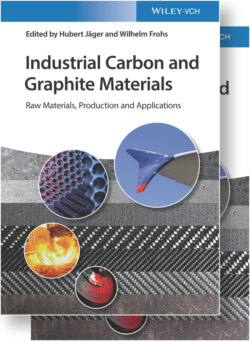Читать книгу Industrial Carbon and Graphite Materials - Группа авторов - Страница 36
3.9 Development of Carbon Fibers
ОглавлениеThe Englishman Joseph Wilson Swan (1828–1914) and his American competitor Thomas Alva Edison (1847–1931) constructed in 1878/1879 long‐life carbon filament electric light bulbs. The filaments were made by carbonization of cellulose fibers. In the 1950s, W.F. Abbott developed a process for carbonizing synthetic rayon into a fibrous material for insulation, filtration, and adsorption. In 1959, the American Union Carbide Corporation started the industrial production of those fibers predominantly for the reinforcement of phenolic resins for rockets and missile components. Since 1950, synthetic polyacrylonitrile (PAN) fibers were oxidized and heat‐treated to black fibers that could be carbonized, too. In the 1960s, flexible and high‐strength carbon fibers of various qualities were made from PAN and further processed to multifilament spun yarns, woven fabrics, and felts for reinforcement of plastics and carbon itself. In 1963, the Japanese Sugio Otani detected that some pitches from coal tar and petroleum are spinnable to pitch fibers, which can be carbonized to carbon fibers. In 1976, J.C. Lewis, L. Singer, and coworkers developed high‐modulus carbon fibers by spinning, carbonizing, and graphitizing of liquid‐crystalline mesophase pitch from coal tar and petroleum. Today, various types of carbon fibers predominantly from PAN are produced up to more than 40 000 t per year for reinforcement of lightweight plastic construction materials [16].
